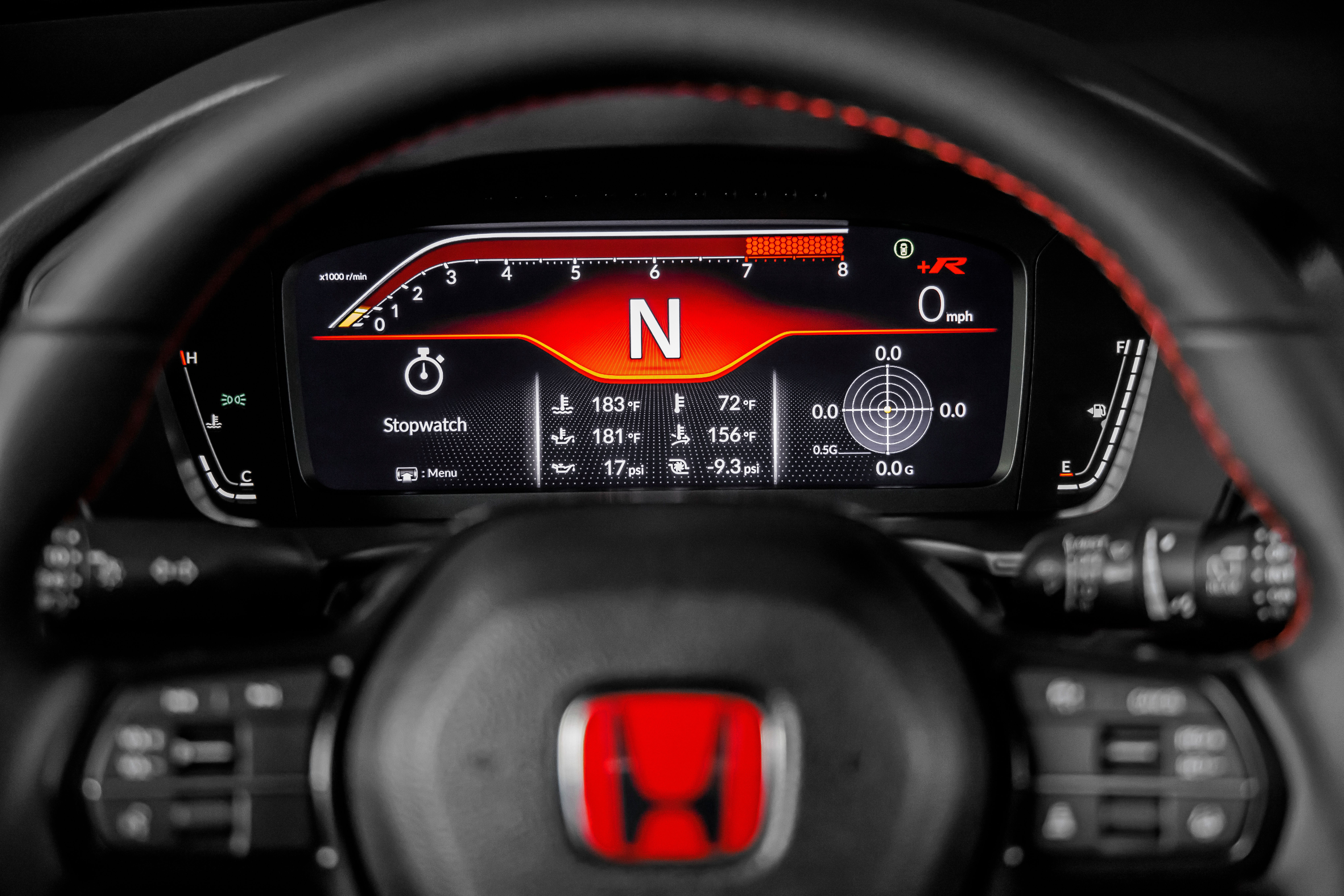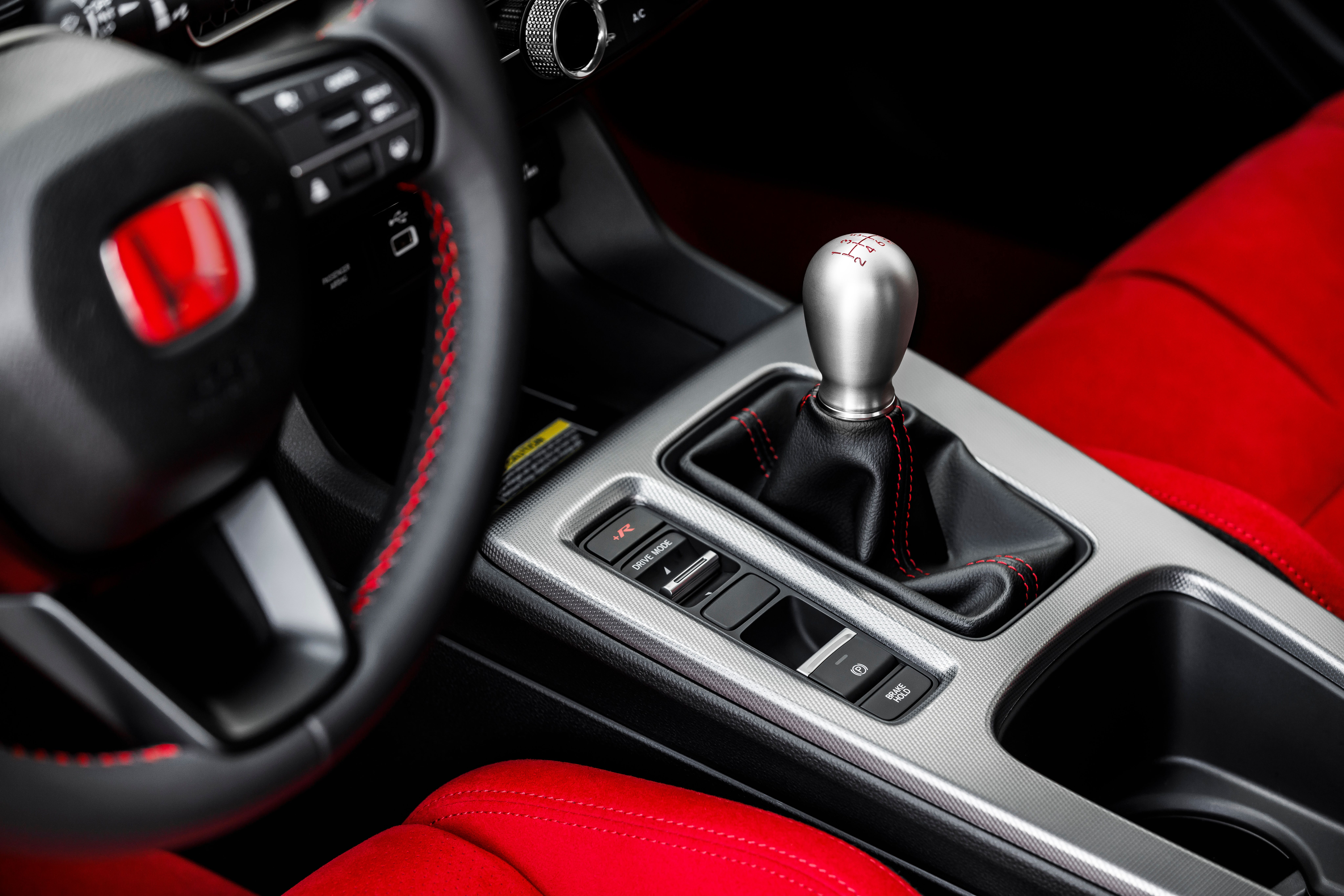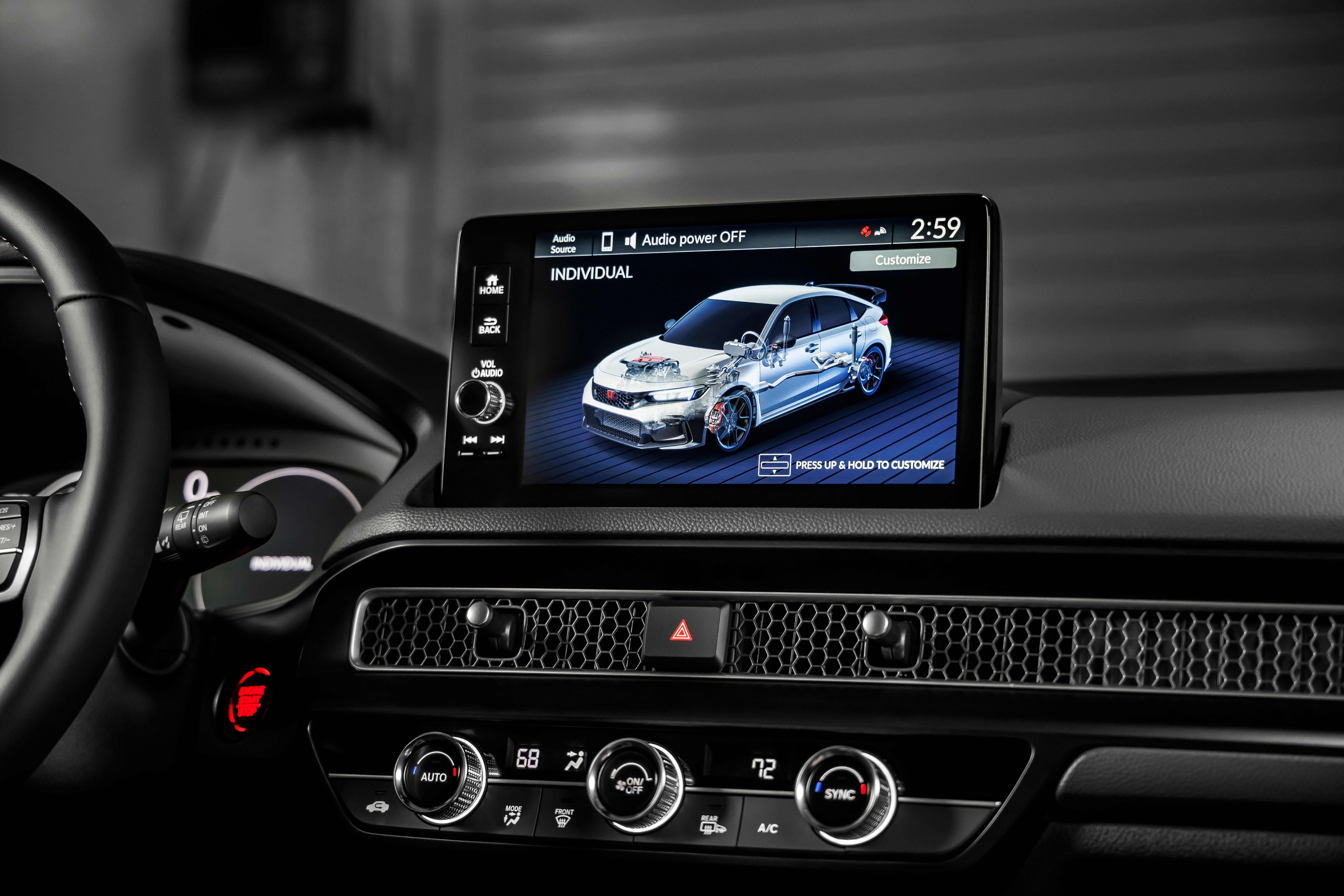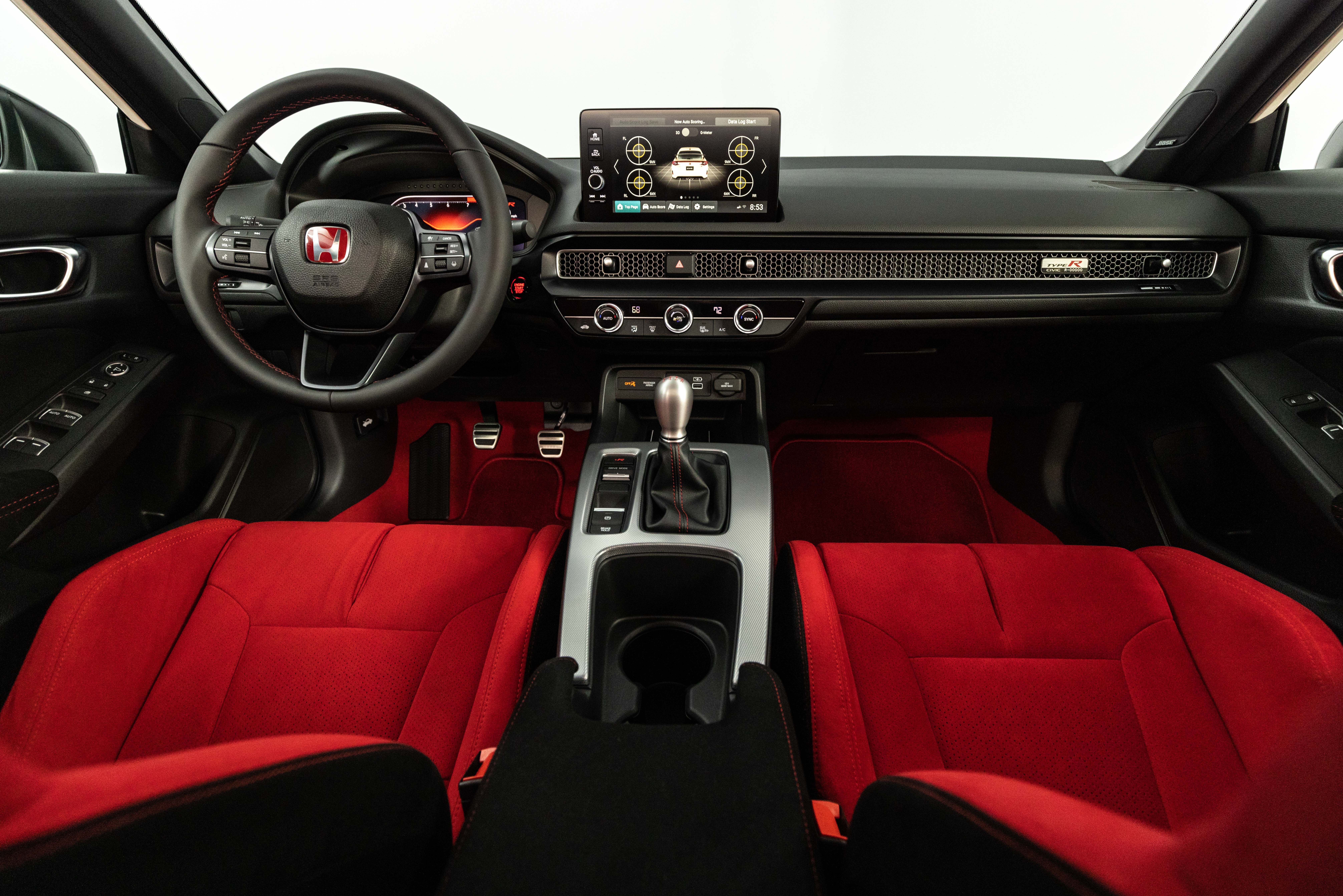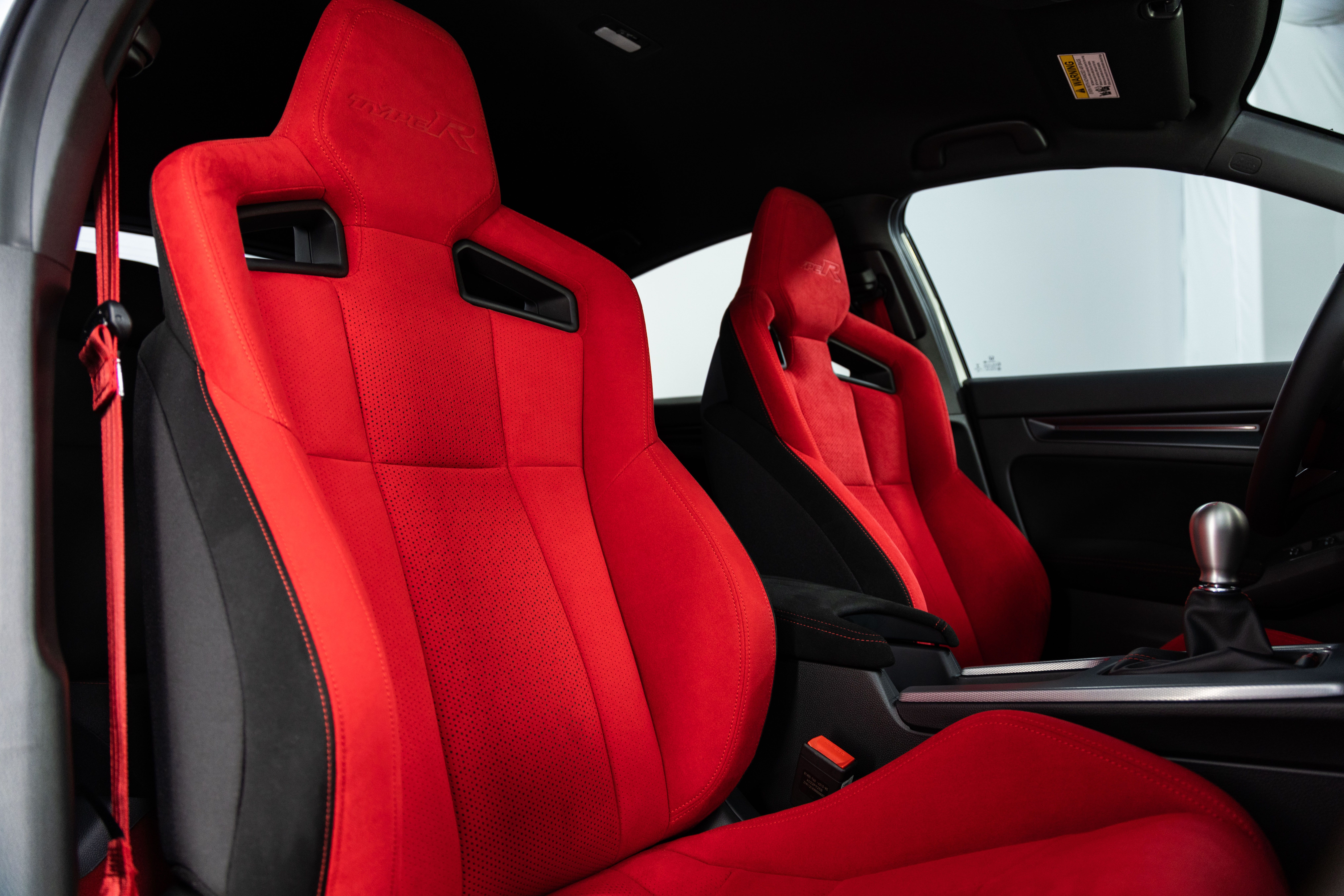Honda engineers have repeatedly outdone themselves with each generation of the iconic Honda Civic Type R. The performance version of the Japanese bestseller can trace its roots back to 1997, with the EK9 generation, and now, the eleventh generation Civic Type R is finally here for the 2023 model year. The new Type R promises to not only be the most powerful Civic ever made but also the closest thing to a Touring car for the road. Here’s why the Japanese performance model is the ultimate hot hatchback.
The most powerful Civic Type R yet
With the 2023 Civic Type R being fresh out of the box, Honda has not given us all the details yet. We know that the 11th generation will still be powered by the same K20C1, 2.0-liter, turbocharged inline-four unit that we know from the 2015 Civic Type R. However, we know it will have more power than any other Civic Type R before it although how much more, is still a mystery. With a baseline of 306 to 316 horsepower (228 to 236 kilowatts), depending on the market, and 295 pound-feet (400 Nm), we expect at least 10 extra ponies to be squeezed from the 2023 model.
Still, exclusively, with a manual
The Civic Type R has always been about driver engagement and a big part of that is having the ability to shift the gears yourself. The eleventh generation of the hot hatch still comes with only one transmission option – an improved version of the six-speed manual with automatic rev-matching. Unfortunately, even a driver’s car like the Civic Type-R has fallen into the trap of electronic E-brakes. This, probably, means you won’t be able to do any handbrake turns, which is part of the fun in a hot hatchback. We would have loved to see the good, old, manual handbrake make a comeback, but it is what it is.
The most manageable front-wheel-drive car ever produced
The Honda Civic Type R has always been front-wheel-drive only. In times when some of its competitors like the VW Golf R and Toyota GR Corolla have adopted all-wheel drive, the Japanese hot hatchback remains old-school. With that said, Honda’s brilliant, limited-slip differential and the sheer engineering behind the Civic Type-R have proven that torque steer doesn’t have to be a problem.
The 10th generation Civic Type R could reach 60 mph (97 km/h) from a standstill in as little as 4.9 seconds if you get it right. Of course, you still have to work for it unlike in an all-wheel-drive car, but it is all the more rewarding when you nail it. Moreover, the Civic Type R now comes with 19-inch wheels, wrapped in Michelin Pilot Sport 4S tires. Those have been chosen specifically for their balance between great traction and longevity. Having 19-inch wheels also means you have more options in terms of high-performance tires.
Revised chassis and aerodynamics
The 2023 Honda Civic Type R is both wider and lower compared to the previous generation. The front end of the car, in particular, does not share a single body panel with the standard Civic. Honda has not given us exact dimensions yet, but the area between the headlights and wheel arches, in particular, shows how much wider the performance version of the hatchback is.
The overall design is not only cleaned up compared to the outgoing model, but features improved aerodynamics. The front fascia features a bigger air dam, in which the intercooler is nested. The new aluminum hood features a multi-functional hood scoop that both improves downforce and serves as an air extractor, keeping the engine cooler. The new, die-cast aluminum, rear spoiler has been specifically designed to keep the rear end planted while reducing drag to a minimum.
The new rear diffuser is, as you would expect, massive and still incorporates the Type R’s signature triple exhaust where the middle section serves to reduce the booming noise from when you are reaching the top speed. Speaking of top speed, the 2023 Civic Type R is expected to be capable of at least 170 mph (274 km/h). Stopping power has been entrusted to Brembo brakes, which are standard on the Type R. The chassis has been stiffened even further as part of Honda’s strife to produce a hot hatchback that is as close to a Touring car as possible.
Purposeful interior, designed with track use in mind
The most noticeable features are the signature, for a Type R, red, Alcantara bucket seats. The dashboard design is much cleaner with matt-black accents to minimize sun glare while on a racetrack. The materials are more upscale than before and a nine-inch infotainment touchscreen has been introduced. The cockpit is, obviously, driver-centric with the drive-mode button intuitively positioned right next to the shifter.
Alcantara has been generously used throughout the interior, including on the door armrests, which look very well padded. One place where you might expect to find Alcantara is the steering wheel, but Honda has decided to wrap it in leather, most likely, due to it being more durable. The aluminum gear-shifter is a nice touch as it harkens back to classic Type-R models.
The Civic Type R makes it clear that all the business is happening at the front. The rear seat is exactly the same as in the standard Civic with the exception of the red stitching and red seatbelts. Moreover, the second-row seats are quite spacious, and a testimony to how much the model has grown. What’s more impressive is the cargo space, which seems to be even more generous than in a Golf R. Moreover, the seats fold in a 60-40 matter, significantly increasing the luggage capacity.
It will not be much more expensive than the outgoing model
Honda is yet to announce official pricing, but looking at the 2022 Civic Type R, which had a starting price of just under $40,000, we can expect the 2023 Honda Civic Type R to have a starting price of around $42,000. While it may seem like a lot for a hatchback, the Civic Type R does come with heritage and proper engineering behind it. Really, Honda couldn’t have done a better job at celebrating 50 years of Honda Civic.

